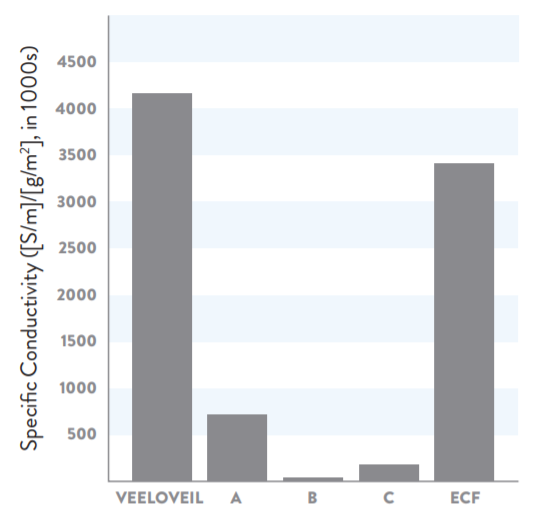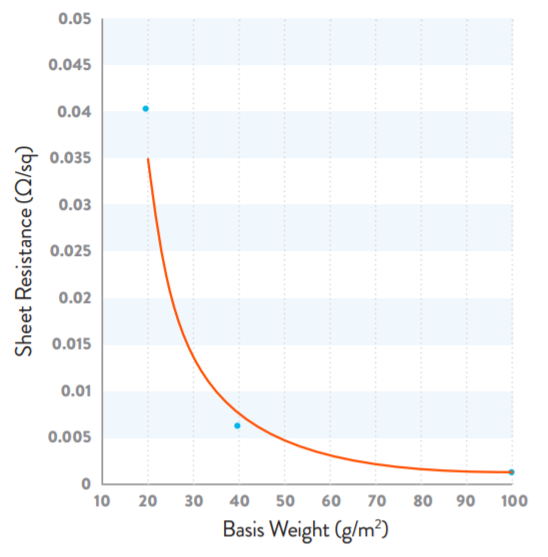Enhanced TDS
Knowde-enriched technical product data sheet
Identification & Functionality
- Chemical Family
- Composite Materials Functions
- Technologies
- Product Families
Features & Benefits
- Materials Features
- Features
- Electromagnetic effects (EME)
- Lightning strike protection
- EMI shielding
- Repairing
- Electrical networks on composite skins
- Ground plane
- Benefits
- 3–100x lower sheet resistance than metallized nonwoven competitors at similar areal weights
- 50%–75%+ lighter than expanded copper foil (ECF)
- Vastly superior shielding performance (>100 MHz) compared to ECF
- 4.5–300x higher specific conductivity than other metallized nonwovens
- Available in commercially integrated product forms (pre-preg, film adhesive, surfacing film)
- Samples available for characterization, hand lay-ups, and testing
- 12" or 36"-wide rollstock (dry)
Applications & Uses
- Markets
- Applications
- Composites Processing Methods
- Applications
- Delivering differentiated material solutions
- Multiple EME applications and systems
Properties
- Physical Form
- Typical Properties
Value Units Test Method / Conditions Basis Weight (Dry) 20 - 80 g/m2 - Thickness 5.0 μm - Sheet Resistance 0.002 - 0.040 Ω/sq - Edge-To-Edge Electrical Uniformity (COV) max. 5 % - Electrical Anisotropy (MD/CD) max. 2:1 - - Shielding Effectiveness (30–100 MHZ ) 75 - 80 dB - Shielding Effectiveness (100 Mhz–1 GHZ ) 80 - 75 dB - Shielding Effectiveness (1–10 GHZ ) 75 - 55 dB -
Regulatory & Compliance
- Certifications & Compliance
Technical Details & Test Data
- Veeloveil Vs Metalized Nonwovens A,B,C And Expanded Copper Foil

- Sheet Resistance Vs Basis Weight

Packaging & Availability
- Veeloveil Outperforms Other Commercially Available Metallized Veils
- 3x less resistive and 36% lighter than the least resistive commercially available metallized nonwoven
- 4.5–300x better specific conductivity than COTS metallized nonwovens